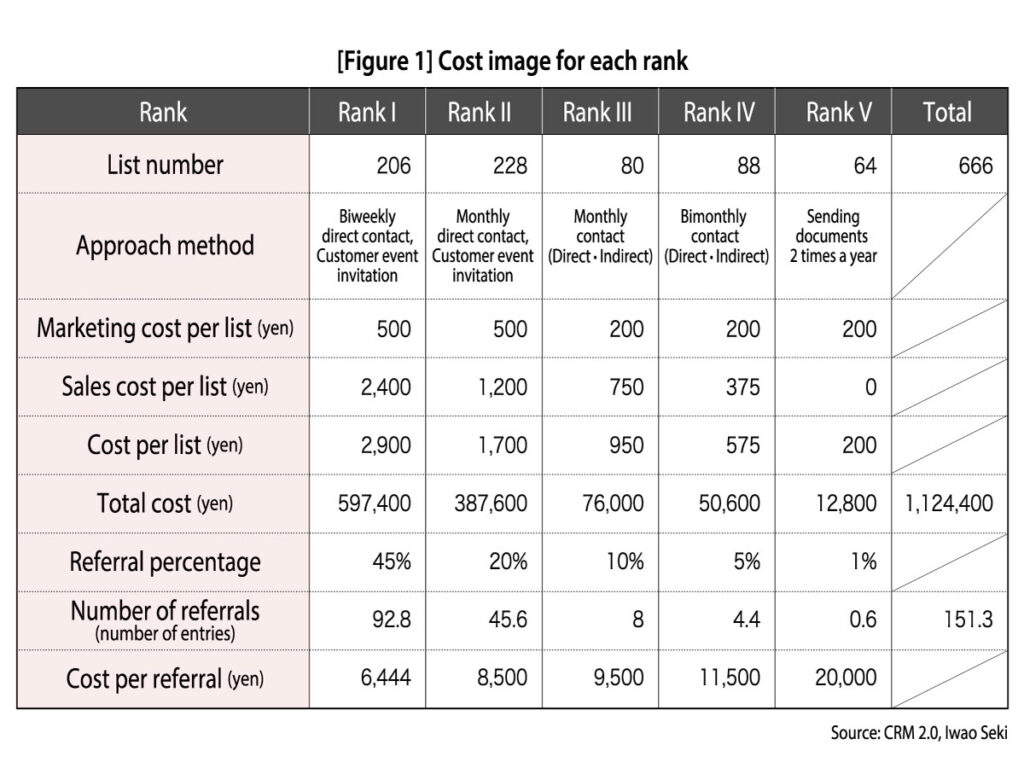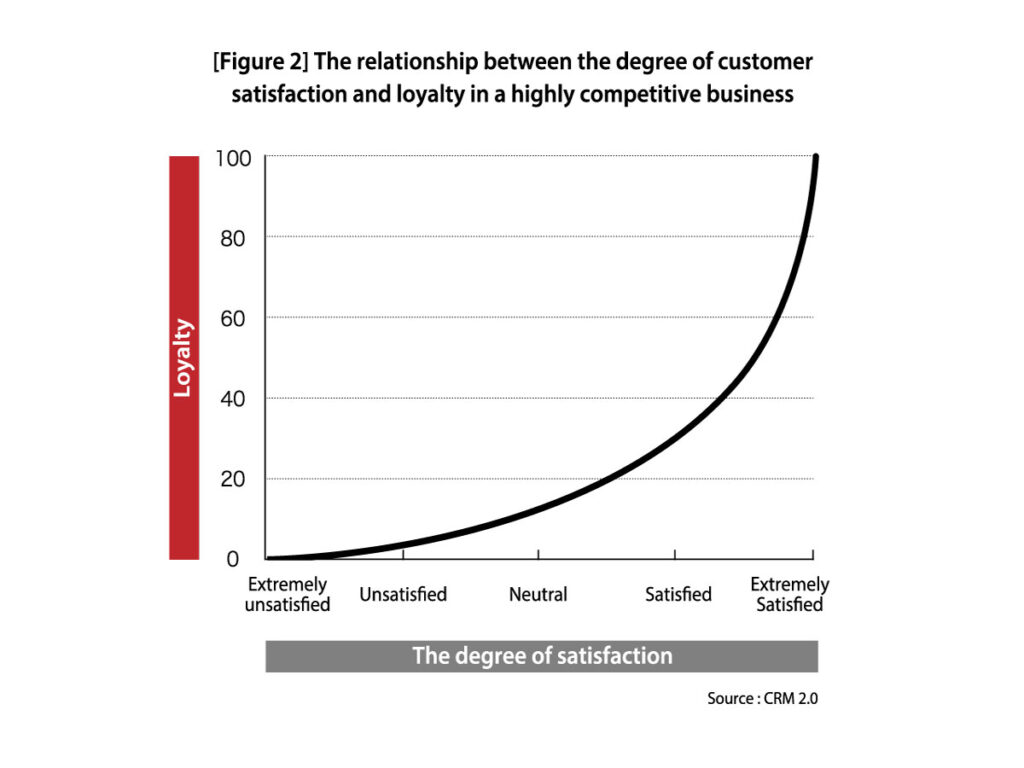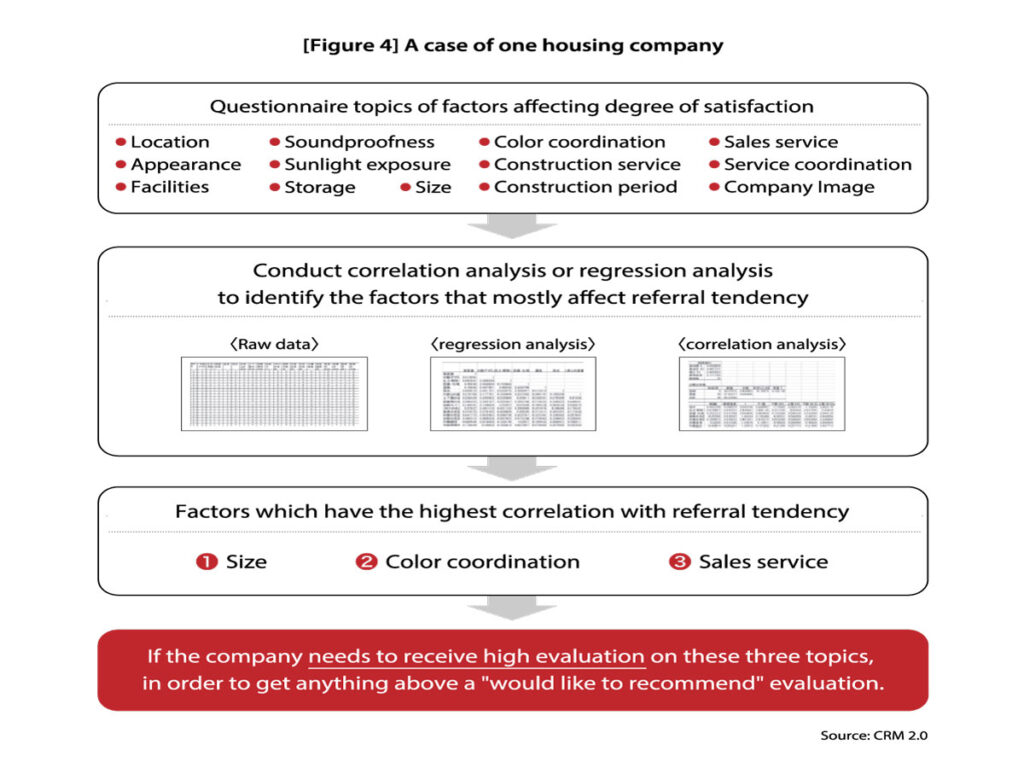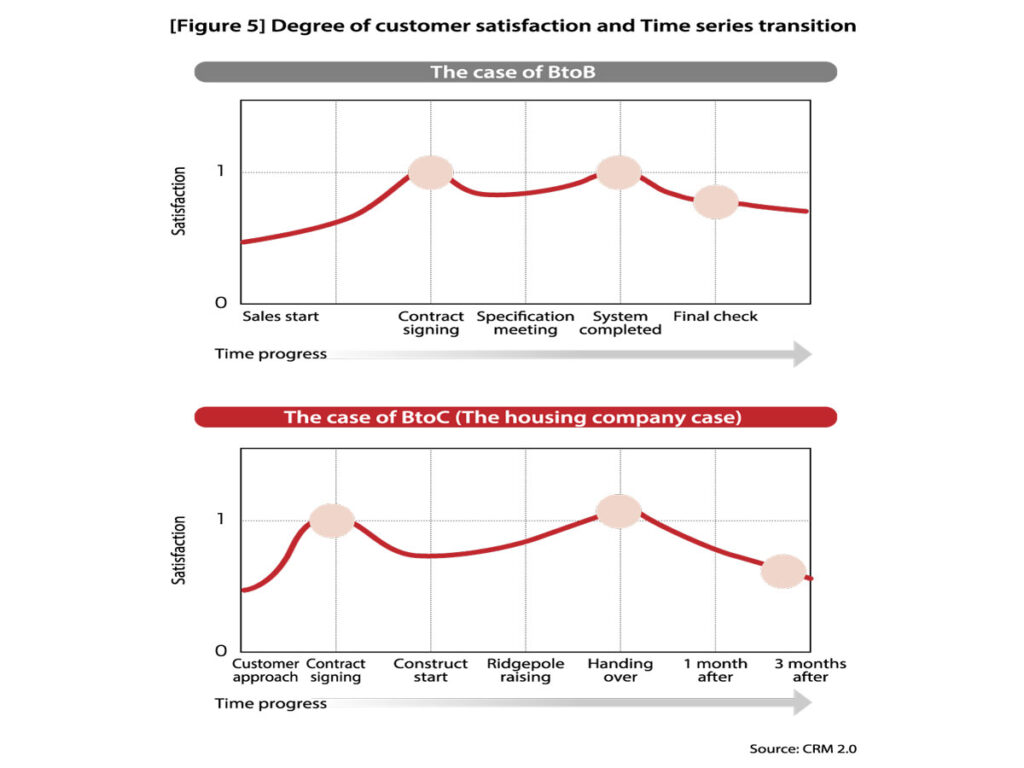Referral Sales in Management Strategy 2/3
The following four main actions were previously mentioned:
4S: 1. Segmentation
To carry out the referral sales strategy, segmentation is the first action that should be taken. As it is inefficient to target all, segmentation of customers should be conducted at the onset to narrow down the target group.
Criteria for customer segmentation
Here, the criteria for narrowing down the target customer group is important. The aim of segmentation is the “selection of customer to strengthen referral.”
For example, to stimulate repeat purchases, RFM analysis, which analyzes customers based on the following three criteria: “recency” (most recent purchase date), “frequency” (purchase frequency), and “monetary” (most recent purchase value), are considered effective. However, the target of a referral strategy is only customer referral and word of mouth, at the most. Therefore, a customer management principle that is completely different from RFM analysis is necessary.
For the referral sales strategy, customer segmentation, on the other hand, is based on “referral tendency” (referral record and recommendation tendency), “satisfaction,” and “most recent contact.”
Customers who have referral records in the past have a high possibility of being referred again. As for recommendation tendency, it is necessary to conduct Customer Satisfaction (CS) surveys and others to assess the intention of recommendation.
In this category, factors that contribute to customer satisfaction and the “extremely satisfied” line should be determined.
Even though the customer has high satisfaction and referral records, if the most recent contact is 5 years ago, there is a possibility that he may no longer be a valid choice.
Even though the number could be different for each business, a standard period of time such as “customers with a contact within two years” must be decided.
As previously mentioned, in order to conduct such segmentation, CS survey is necessary and must be conducted on a regular basis, such as, at a customer’s first purchase.
Next, these three segmentation criteria are used to categorize customer into ranks. The categorization of customer into ranks contributes to an extremely efficient customer approach as an organization.
Figure 1 shows an example of cost distribution and detailed approach for each customer rank.

4S: 2. Satisfaction
In referral sales, how to create as many customers with high recommendation tendency as possible is the issue. Therefore, it is important to clarify “what factors strongly influence recommendation tendency”.
The correlation between recommendation tendency and satisfaction
Figure 2 summarizes “the relation between repeat purchase percentage and customer satisfaction.
From this data, it can be observed that the level of loyalty rises slowly from “Extremely unsatisfied” to “Satisfied” but rises sharply to “Extremely Satisfied.”
This proves the significance of the “Extremely satisfied” level in CLV.

The next graph is a case study from a certain B2B company showing the relationship between satisfaction and referral tendency.
This graph is similar to the previous one in such a way that the percentage of referral tendency increased steadily until “Satisfied,” suddenly taking a big leap to “Extremely Satisfied.”
From the graph above, it can be seen that when dealing with referral tendency, it is important to focus on “Extremely Satisfied,” not “Satisfied.”

Let’s take a look at the case of one housing sales company. Due to housing being a sector with low-purchase frequency and high-price products, normally, there are no repeat sales, and aiming for referrals is inevitable in this business.
The document above is a questionnaire conducted on customers who purchased from the housing sector, questioning “What are you satisfied about the product?”
From the answers, “size,” “color coordination,” and “sales service” are found to have the highest correlation with referral tendency.
Based on the result of the questionnaire, the company determined “color coordination” to be the most effective factor in increasing referral tendency, and the company took the measure of increasing the discussion time largely for color coordination.

Timing affects referral tendency
Another factor that affects referral tendency is timing. The best timing is “the time in which the customer has the highest satisfaction and interest” in the buying process.
Therefore, when considering referral tendency, the extent to which referral activity is promoted during the period of a customer’s high satisfaction and interest is important.
Generally, there are three points at which the customer’s satisfaction becomes higher. The case of a system development company will be introduced as a B2B business example.

The three points in time at which the customer’s satisfaction increases are, firstly, “after signing contract,” in which the customer spent time choosing one company among several competitors.
Next is “when the system is completed,” which pertains to going through several meetings and progress reports, and finally, after completing the inspection period, the product is completely handed over to the customer “during the final check.”
As a company, understanding this satisfaction curve is important. Similarly, organizing detailed actions that are effective in increasing satisfaction and creating a reproducible task flow is just as significant.
In this article, the first two Ss of the 4S framework of referral sales strategy were introduced. In the next column, the remaining two Ss, “Sales” and “System,” will be presented.
Thank you for your interest.
Please fill in some important information and we will be in touch.